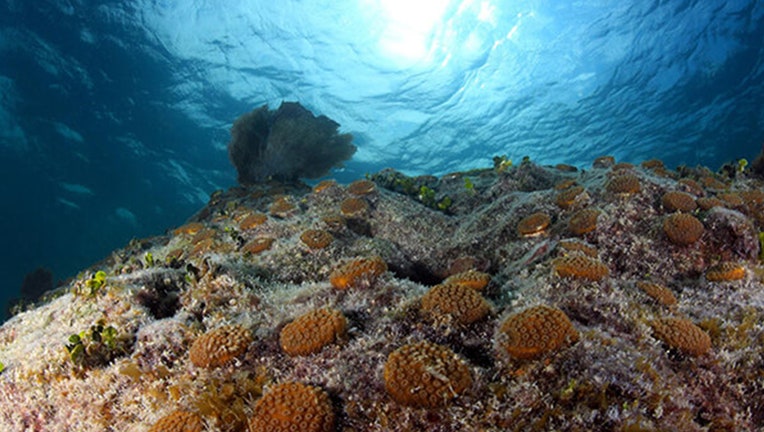Environmental groups begin planting coral fragments at reefs off Florida Keys

Outplantings of star coral grow at Looe Key Reef. Photo: Greg McFall/NOAA
KEY WEST, Fla. - Federal officials and environmental groups have begun to plant more than 60,000 fragments of nursery-raised coral at reefs located off the Florida Keys.
The National Oceanic and Atmospheric Administration announced Tuesday that workers have started the three-year outplanting project at Eastern Dry Rocks Sanctuary Preservation Area near Key West. The announcement came just two days before Earth Day, an annual event to demonstrate support for environmental protection.
"Outplanting at this unprecedented scale is one of many immediate actions needed to address the rapid decline in our treasured coral reefs," acting NOAA Administrator Ben Friedman said in a statement.
Eastern Dry Rocks contains a concentration of bank reef habitats that are ecologically and economically important to the Florida Keys, officials said.
READ: Residents push for water testing as county eyes algae bloom after Piney Point wastewater dump
Distinct genetic strains of elkhorn and staghorn corals are being transplanted across more than 9 acres (3.6 hectares). The corals were grown in their respective nurseries over six to eight months.
This is the first large-scale project in a mission to restore seven coral reefs within Florida Keys National Marine Sanctuary. NOAA and the National Fish and Wildlife Foundation awarded a $5 million grant through the National Coastal Resilience Fund to the National Marine Sanctuary Foundation, in partnership with Mote Marine Laboratory & Aquarium and Coral Restoration Foundation.
RELATED: The Florida Aquarium reproduces another coral species, and it's all captured on video
The grant is the largest one-time investment since the initiative was announced in December 2019.
In later stages of the project, students and faculty of College of the Florida Keys will also help reintroduce thousands of herbivores, like the Caribbean King Crab, to the site to serve as natural grazers that help sustain a healthy ecosystem.

